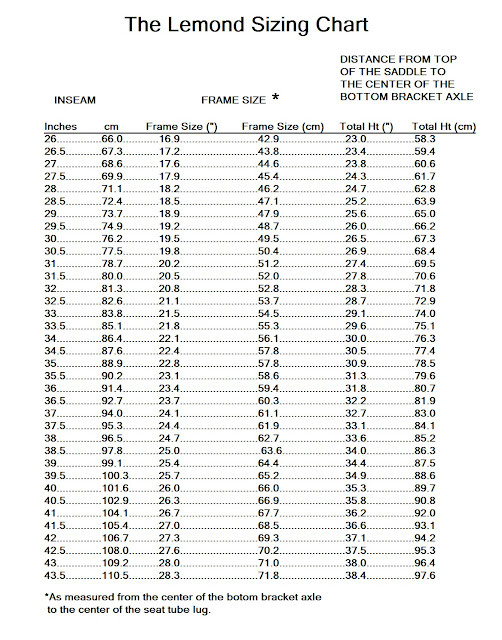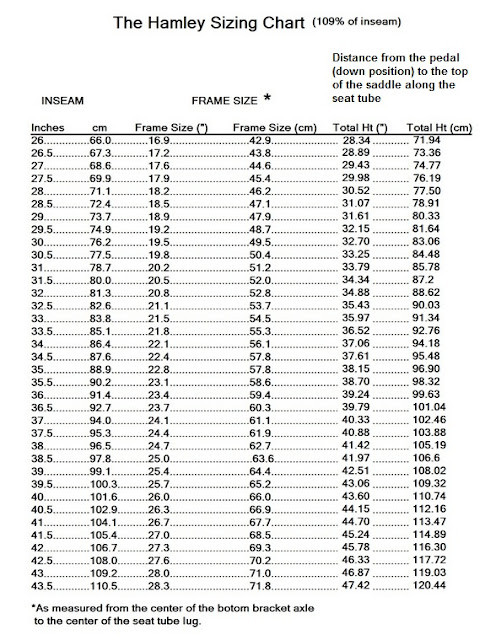Finding the right road bike size and saddle height is crucial for comfort, efficiency, and preventing injuries. Many cyclists, especially beginners, can feel overwhelmed by bike sizing. Understanding how to use a Road Bike Height Chart can simplify this process and ensure you get the most out of your rides. This guide will delve into effective methods, primarily focusing on the widely respected Lemond sizing chart, to help you determine your ideal bike setup.
Understanding Road Bike Height Charts
A road bike height chart is a tool designed to correlate your body measurements, primarily inseam length, with recommended frame sizes and saddle heights. These charts are based on biomechanical principles aimed at optimizing leg extension during pedaling. Proper leg extension is vital for power output, endurance, and reducing strain on your knees and joints.
While various methods exist, including estimations and formulas, charts offer a quick and accessible starting point. Two prominent approaches are the Lemond Method and the Hamley Method, each with its own basis and application. We will explore these methods, with a strong focus on the Lemond chart, renowned for its scientific foundation and practical success.
The Lemond Method: A Gold Standard for Bike Sizing
The Lemond sizing method, popularized by cycling legend Greg Lemond in his book “Greg Lemond’s Complete Book of Bicycling,” is rooted in research conducted by Dr. Ginet and supervised by Cyrille Guimard. This method focuses on achieving optimal leg extension, considered to be approximately 96% of full leg extension for maximum cycling efficiency and power.
The Lemond chart simplifies the calculation by providing direct frame size and saddle height recommendations based on your inseam measurement. It takes into account average shoe and cleat thickness and calculates measurements along the seat tube angle from the center of the bottom bracket to the top of the saddle. This eliminates complex math and provides a straightforward way to find your starting point.
 Lemond Frame and Saddle Height Sizing Chart Lemond Frame and Saddle Height Sizing Chart |
|---|
| Lemond Frame and Saddle Height Sizing Chart for Road Bikes |
How to Use the Lemond Chart:
- Measure Your Inseam: Stand with your back against a wall in bare socks. Place a 2-inch hardcover book snugly between your legs, mimicking a saddle. Mark the wall at the top of the book. Measure the distance from the floor to the mark in centimeters. For accuracy, repeat this measurement 2-3 times and take the average.
 Measuring inseam for road bike sizing using a book against a wall
Measuring inseam for road bike sizing using a book against a wall
- Consult the Chart: Locate your inseam range on the Lemond chart. The chart will provide corresponding frame size recommendations (center-to-center measurement) and saddle height from the center of the bottom bracket to the top of the saddle, measured along the seat tube angle.
Important Considerations for the Lemond Method:
- Classic Frame Geometry: The Lemond chart is based on traditional or classic frame designs with horizontal top tubes. For bikes with sloping top tubes, the chart remains a valuable starting point, but adjustments might be needed.
- Crank Arm Length: The chart assumes standard 172.5mm crank arm lengths. Minor adjustments to saddle height may be necessary for significantly different crank lengths.
- Saddle Position: Sliding your saddle forward effectively lowers your saddle height and reduces leg extension, while sliding it backward increases saddle height and leg extension.
Exploring the Hamley Method
Another method for determining saddle height is the Hamley Method. Research by Hamley and Thomas (1967) indicated that maximum power output (over short durations) is achieved with a saddle height approximately 9% greater than the inseam. This measurement is taken from the pedal at its lowest point to the top of the saddle, along the seat tube angle.
Further studies, such as those by Faria and Cavanagh (1978), supported the sensitivity of power output to saddle height deviations from this 109% inseam mark. However, Nordeen-Synder (1977) found that optimal efficiency (least oxygen consumption) occurred at approximately 107% of inseam length, aligning closely with the Lemond method’s recommendations.
 Hamley Saddle Height Sizing Chart Hamley Saddle Height Sizing Chart |
|---|
| Hamley Saddle Height Sizing Chart for Road Bikes |
Hamley vs. Lemond: Choosing the Right Method
The original article suggests that the Lemond chart is generally more suitable for road racers and time trialists, prioritizing sustained power and efficiency. The Hamley method, with its slightly higher saddle position, might be favored by track sprinters who benefit from maximal power bursts over shorter periods. However, for most road cyclists, the Lemond method provides a robust and scientifically backed approach to bike sizing and saddle height.
Beyond Charts: Fine-Tuning Your Fit
While road bike height charts are invaluable starting points, achieving a truly personalized bike fit often requires further adjustments and considerations:
- Saddle Position (Fore/Aft): A general guideline is to position your saddle so that the nose is at least 5 cm behind a vertical line from the bottom bracket, as per UCI regulations. Many cyclists also use the “knee over pedal spindle” (KOPS) guideline, where the front of your knee aligns vertically with the pedal axle when the cranks are horizontal. However, comfort and individual biomechanics should ultimately guide saddle fore/aft adjustments.
- Handlebars and Stem: Handlebar width is often recommended to match shoulder width for comfort and control. Aerodynamics also play a role, with narrower bars offering a slight advantage. Stem length influences your reach to the handlebars and your overall riding posture. Stem adjustments and spacers can fine-tune handlebar height and reach for optimal comfort, aerodynamics, and handling.
Conclusion
Utilizing a road bike height chart, particularly the Lemond chart, is an excellent first step in finding your ideal bike size and saddle height. These charts provide a data-driven foundation for a comfortable and efficient cycling experience. Remember to accurately measure your inseam and use the chart as a starting point. Further fine-tuning of saddle position, handlebar setup, and potentially professional bike fit adjustments will help you optimize your road bike for performance and enjoyment. Getting your bike fit right is an investment in your cycling journey that pays dividends in comfort, power, and injury prevention.
